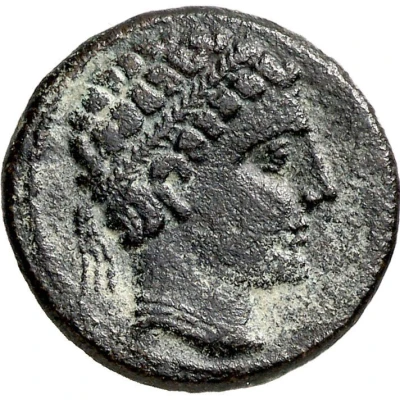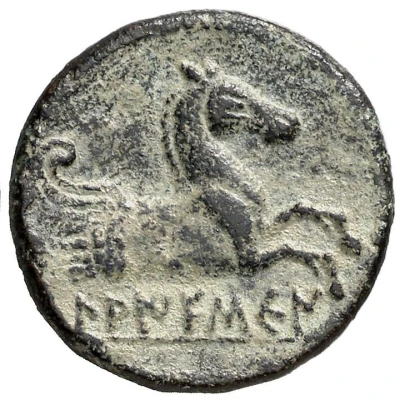


© Aureo & Calicó S.L., subastas numismáticas
¼ Unit 150 BC - 100 BC
| Bronze | 3.1 g | 15 mm |
| Issuer | Laiesken (Laietani people) |
|---|---|
| Type | Standard circulation coin |
| Years | 150 BC - 100 BC |
| Value | ¼ Unit |
| Currency | Unit (second half of the 2nd century BC) |
| Composition | Bronze |
| Weight | 3.1 g |
| Diameter | 15 mm |
| Shape | Round (irregular) |
| Technique | Hammered |
| Orientation | Variable alignment ↺ |
| Demonetized | Yes |
| Updated | 2024-10-10 |
| Numista | N#307586 |
|---|---|
| Rarity index | 95% |
Reverse
Forepart of Pegasus facing right
Script: Iberian (Levantine)
Lettering: LAIES'KeN
Comment
Reverse inscription:"LAIES'KeN" written from left to right in non-dual northeastern Iberian script.
Interesting fact
The Laiesken (Laietani people) coin is interesting because it was used by a pre-Roman tribe in the Iberian Peninsula, which is now modern-day Spain and Portugal. The Laietani people were known for their advanced engineering and agricultural skills, and their coinage system was likely based on a barter system, where the value of the coin was determined by its weight in bronze. This coin, in particular, weighs 3.1 grams and was likely used for small transactions or as a form of payment for goods or services. It's fascinating to think about how different societies throughout history have used currency in various ways, and how it has evolved over time.